The average income for underwater welding in 2024. Statistically, underwater welders earn an average of $53,990 per year and $25.96 per hour, according to commercial divers. The majority earn between $25,000 and $80,000 per year. The top 10% of diver welders make $83,730 a year while the bottom 10% make $30,700.
According to Bureau of Labor Statistics BLS, Here are the details of underwater welder salaries for 2023.
United States
| Percentile | 10% | 25% | 50% (Median) | 75% | 90% |
| Annual Wage* | $30,810 | $37,840 | $49,140 | $66,570 | $108,170 |
United Kingdom
| Inland Salary | Offshore Salary |
| £50,000 | £67,500 |
Canada
| $0 – 19.9K | $20K – 49.9K | $50K+ | Average |
| 20% | 20% | 60% | $55,566 |
Austrailia
| Inland Salary | Offshore Salary |
| $65,000 AUD | $180,000 AUD |
New Zealand
| Inland Salary | Offshore Salary |
| $65,000 NZD | $135,000 NZD |
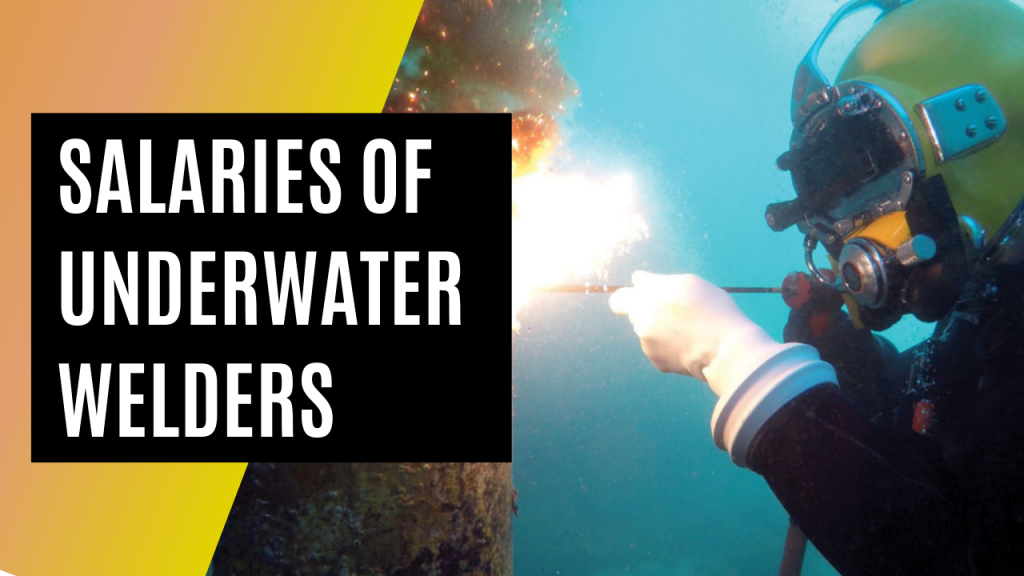
Have you ever wondered what it’s like to have a career as a commercial underwater welding diver? Commercial diving is an exciting and lucrative career for veterans, ex-servicemen, and any adventurous person who wants more than just an average nine to five job. Read this guide to research the salary of underwater welders by city, experience, skill, employer, and more.
As an underwater welder, you are expected to perform in the toughest conditions. The diver must be highly qualified, licensed, and in the best physical and mental condition.
Underwater welders can make serious money: With the right experience, you can easily take home over $ 100,000 a year with you, according to divers and dive school representatives I’ve spoken to and researched with.
Most make around $ 25,000 to $ 80,000 a year. However, you will spend very little time underwater. Your career will focus on one of two locations: offshore or inland.
Relevant Read: BEST WELDING HELMETS FOR MIG 2023
Salaries of Underwater Welders: What Is It Like To Work As An Underwater Welder?
As you begin your commercial diving career, you will find that most commercial divers are employed by leading dive companies. Commercial immersion and underwater welding will vary.
However, on a normal day, you can report to the dock with all your belongings. From there, a transport ship will take you to the construction site – perhaps many miles offshore. Once at the dive site, you get dressed, go through your checklist, and then dive into the water.
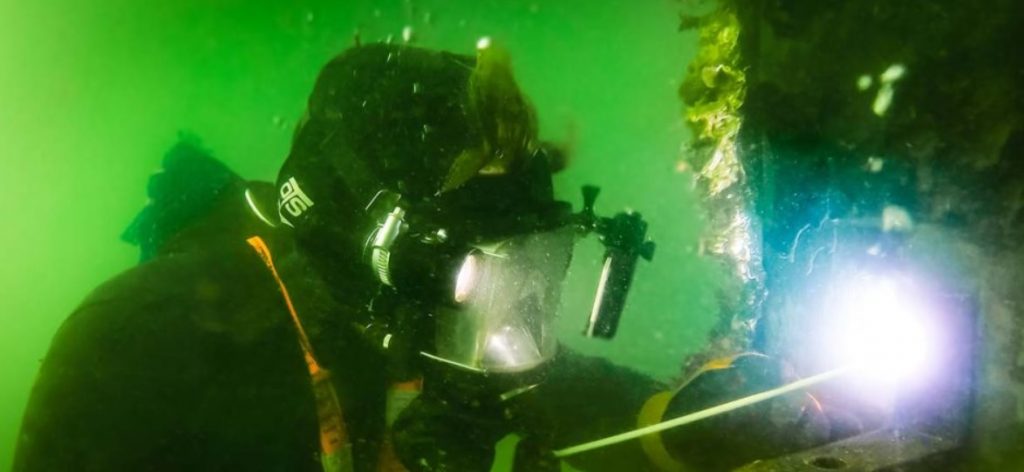
Once submerged, descend to the correct depth, view your project, log in at the top and get to work making the required repairs/welds. When the job is done, tell at the top that the job is done and start your ascent to the surface.
If needed, you can complete the decompression in the water and enter a decompression chamber after surfacing to ensure that decompression sickness symptoms do not occur. This is due to the formation of bubbles (similar to a carbonated drink) in the diver’s tissues!
REQUIREMENTS AND TRAINING AS AN UNDERWATER WELDER
It isn’t easy to train yourself as an underwater welder, but consistency and regularity in training can make you a quality underwater welder. However, it takes time and effort to master.
On the other hand, to get employment in this field, you have to learn to become an experienced diver. There are many quality schools in the United States specializing in both scuba diving skills and underwater welding skills, techniques, and methods you need to excel in your career as an underwater welder.
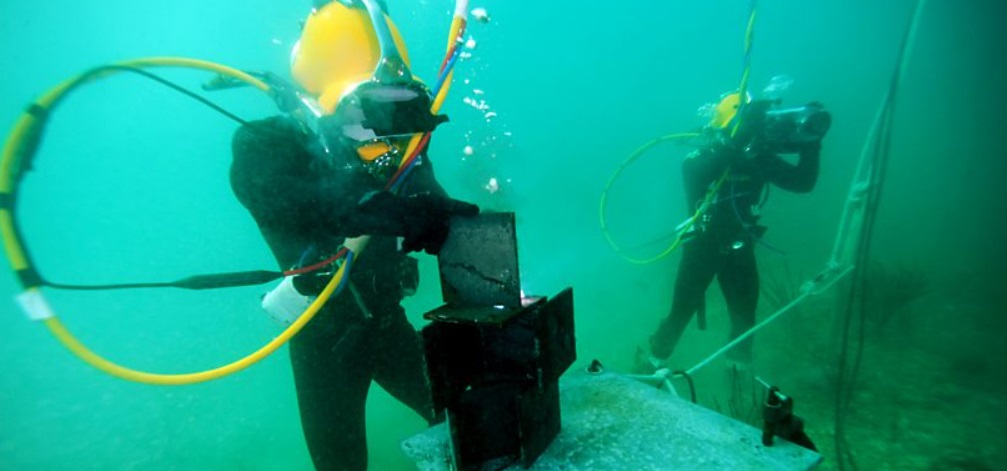
These school and training costs will be an investment that will certainly pay for itself. If you want to make a living from this type of work, you need to consider location and availability.
Relevant Read: Best auto darkening welding helmet
INLAND INCOME
While talking about the salary of underwater welders, Take home a salary of about $ 40,000 to $ 80,000 from your area’s ponds, rivers, and lakes. Most of your work will focus on port areas, bridges, dams, and small ships. Inland welding divers do not receive any money from their offshore colleagues.
But they have the luxury of a less strict schedule (40 hour weeks) and less travel. Unfortunately, fresh water in welding makes the environment more unstable due to the lack of salt ions. Make sure you practice enough before hitting your bow here.
OFFSHORE INCOME
In the ocean, you earn $ 40,000 to $ 100,000 or more every year. Underwater welders at sea spend most of their time on oil rigs or large seagoing vessels such as naval vessels. Your work schedule rarely fades: it is not uncommon to work 80 hours or more in a week. However, due to their busy schedule, underwater welders usually turn inland after a month at sea.
Relevant Read: BEST WELDING HELMETS FOR MIG 2023
WAGES AND INCOMES

Due to the nature of the work (especially for offshore jobs), you can expect a lot of overtime (60 to 80 hours per week), which means an hourly wage increase of 50 percent, which is standard.
Another factor to consider for an additional reward is that underwater welders don’t do much under 15 meters. Still, there is plenty of other work going on at this level and below. For example, saturation dives are very competitive.
Divers spend days or weeks in great depths, but the pay is very lucrative for the work.
While addressing about the salary of underwater welders, That can be $ 1 to $ 4 per foot of depth in the ocean, ocean, or freshwater. It may not sound like a lot of money, but it is sure to add up. Divers often work at depths greater than 500 meters.
Relevant Read: MIG vs. TIG Welding
FACTORS CONCERNED
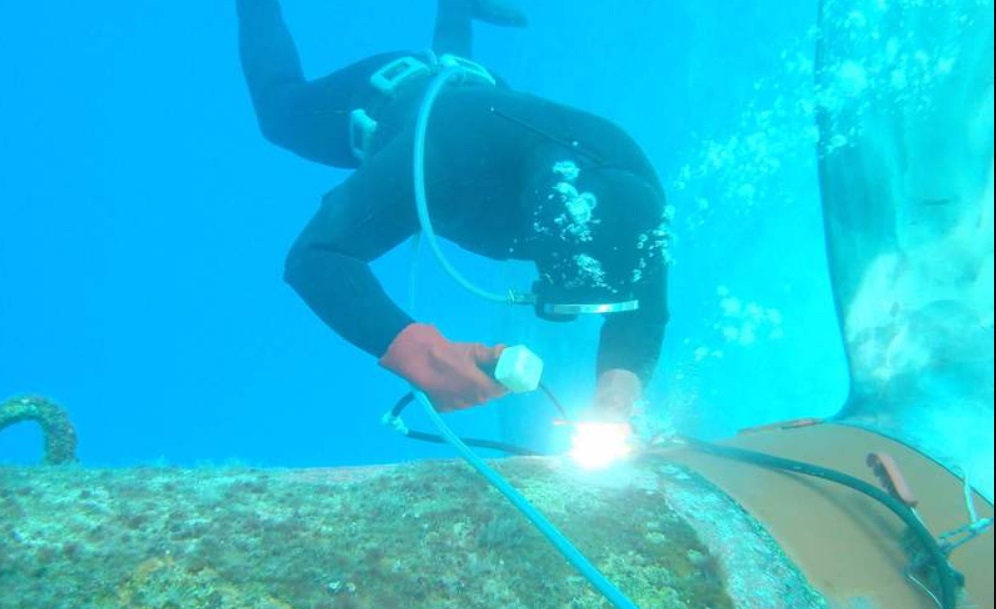
Let’s take a look at some of the factors that lead to higher wages for underwater welders.
Most underwater divers start as apprentices, so-called “tenders.” In learner mode, a diver does much less than an experienced diver. The entry fee is $ 35,000 and can go up to over $ 100,000 to $ 200,000 for an experienced diver. Skilled underwater welders are worth much more because of the field’s hazards and the required technical skills.
Underwater welding can be done both wet and dry. In wet welding underwater, a diver dives into the water.
The welder uses a shielded metal arc welding machine powered by DC fed through an underwater cable system to create a weld. The gas bubble of the arc on the bar welder protects the weld seam.
Underwater dry welding creates dry enclosures around the welding area. Air is pumped in. This allows the diver to work in a well-pressurized chamber to create a weld. Each of these requires special skills and increased risk.
While conversing about the salary of underwater welders, Underwater welding machines usually do not work in the same place for very long. Some operate inland, such as rivers, lakes, and ponds. Others practice their trade-in from offshore ocean locations around the world. Offshore underwater welders are typically paid higher than inland underwater welders due to the extensive travel and greater water depth associated with their work.
Underwater welders routinely handle large equipment specially designed for underwater welding in an unsafe, often hazardous environment.
Besides, many underwater welders work at considerable underwater depths, which places more than normal physical demands on the body. It is no surprise that this type of work involves significant risks.
Relevant Read: Best Welding Helmets for Beginners 2023
WORK ROUTINES
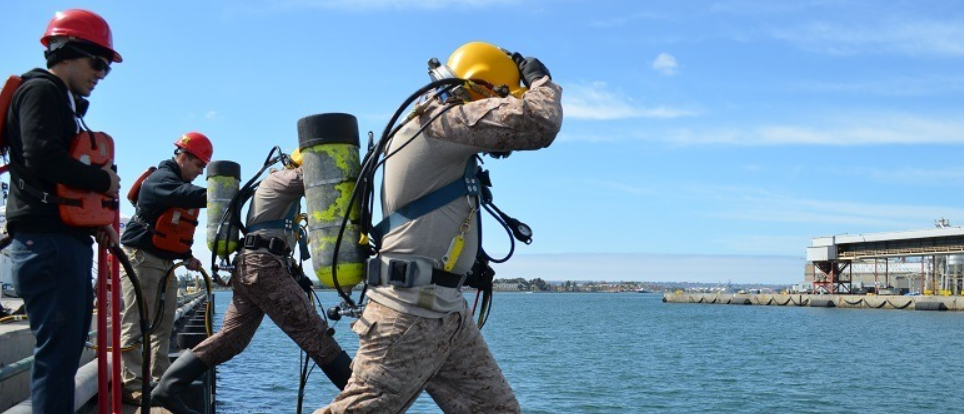
If you talk about the salary of under water welders, Offshore subsea welders typically work on pipelines, oil rigs, and ocean-going vessels that are at sea for several months from April to November.
During the other months of the year, these welders return inland because the ocean is too dangerous to weld underwater. This can, of course, be reversed in the southern hemisphere.
During the season, offshore saltwater welders can work 80 or more hours per week. The schedule is usually staggered: a week later with a few days off and then again. After a month or two at sea, most welders return to shore for a break.
SALARY RANGES FOR UNDERWATER WELDERS
Salaries for an underwater welder in the US range from $ 10,237 to $ 203,999, with an average salary of $ 37,028. The middle 57% of underwater welders make between $ 37,028 and $ 92,466, and the top 86% make $ 203,999.+
Relevant Read : BEST BUDGET WELDING HELMETS UNDER $100
HOW MUCH TAX DO YOU HAVE TO PAY AS AN UNDERWATER WELDER?
While speaking about the salary of underwater welders, For a single applicant in this tax bracket, you would have an estimated average federal tax of 22% in 2018. With the introduction of a 22% federal tax rate, underwater welders can expect a net wage of $ 36,848 / year, with each wage being roughly $ 1,535 *.
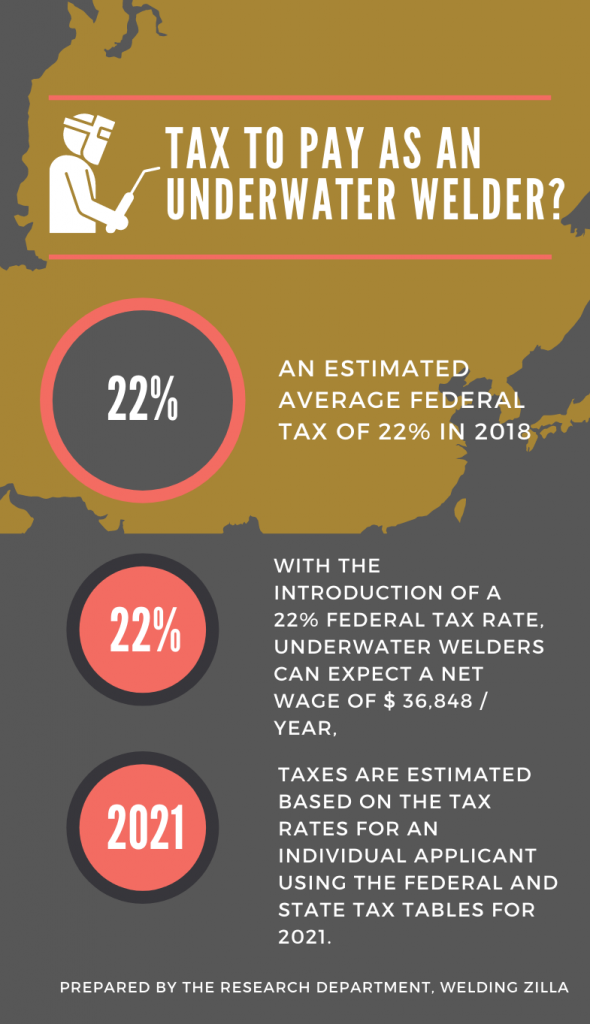
Assume a two-month payment period. Taxes are estimated based on the tax rates for an individual applicant using the federal and state tax tables for 2018. Metro-specific taxes are not included in the calculations. These data are intended as an estimate and not as mandatory financial or tax advice.
Relevant Read: TIG WELDING STAINLESS STEEL
QUALITY OF LIFE FOR UNDERWATER WELDERS
With a net wage of approximately $ 3,071 / month and an average rent for 2BR condos of $ 2,506 / month **, an underwater welder would pay 81.61% of his monthly post-wage in rent.
Inland Income
Among the ponds, rivers and lakes of your area, you’ll bring home a paycheck of about $40,000 – $80,000. Most of your work will focus on dock areas, bridges, dams and small vessels.
Divers who work inland don’t get as much money as their offshore counterparts.
As a result, they have the luxury of a less rigid schedule (40 hour weeks) and less travel. However, freshwater, since it lacks salt ions, makes for an unstable welding environment.
You will need plenty of practice before you can strike your arc
Offshore Income
Each year, you will earn $40,000 – $100,000 in the ocean.
Most offshore underwater welders work on large marine vessels like Navy ships or oil rigs. Due to the intensity of their schedule, underwater welders usually return home after a month at sea due to their intense schedule. They often work 80 or more hours in a single week.
Underwater welders are responsible for cleaning, pipe welding, and installing components beneath major platforms. They must have an excellent head for repairs to large machinery.
An added bonus would be if they had experience as a Diver Medical Technician.
Due to tidal waves, hurricanes, and other hazards, offshore welder divers must come in for the winter.
During the winter, you can gain additional welding experience by working at a welding shop along the coasts.
The Money Tide
Underwater welders’ earning potential increases after 3 – 5 years, regardless of whether they work onshore or offshore.
You’ll have a much higher chance of employment if you make it through these formative years than your less experienced colleagues.
Career Earning Percentiles for Underwater Welding
Wanting specifics?
The following are some of the latest underwater welder earnings in the US:
- (Lower 10%) $29,220
- (Median 50%) $45,890
- (upper 90%) $84,370
This information is provided in a report published each year by the Bureau of Labor Statistics.
Additionally, to experience, underwater welders should consider the following characteristics that can increase their earnings.
Under Pressure & Depth
Saturation diving (deep diving for days or weeks) is a highly competitive branch of this field, primarily due to the pay. Underwater welders rarely weld below 15 meters, but there’s plenty of other maritime work in demand below this level.
Each foot may cost between $1 and $4 for employers.
There are divers who work in depths of more than 500 feet; it’s not uncommon for them to work at such depths.
Overtime: Heavy clocking
As with the tide, diving work has a natural ebb and flow. The work of underwater welders on offshore projects can require two or three 60-hour work weeks in a row (or an 80-hour week) in a row.
All that overtime isn’t cheap: It is generally considered standard to increase your hourly wages by 50%.
As work generally slows down in colder months (at least offshore), underwater welders take advantage of these heavy work seasons.
Certification Level: Having a higher certification qualification means you can meet greater challenges, and employers will pay you more for the skills you possess.
Job Execution: Each career has specific responsibilities that must be met with a “satisfactory” grade or better.
As you travel further from shore, your pay can increase due to the greater risk you’re taking.
CONCLUSION
For individuals opting for underwater welding training and certification, salaries can be lucrative, and career opportunities are limitless—many underwater welders’ transition to managerial and management or technical positions. You can become consultants, trainers, and inspectors as salary options increase.
Underwater welding was one of the most dangerous jobs in the past, but recent technological advances in the industry have made the job a lot safer and easier.
Underwater welding is a difficult, physically, and mentally challenging career that few feels called upon. As the demand for transport and energy continues to rise, underwater welding will remain a popular profession.
Until highly advanced robots and automated machines can perform tasks with the most complex levels of skill, dexterity, and performance, underwater divers will continue to be needed by companies around the world.